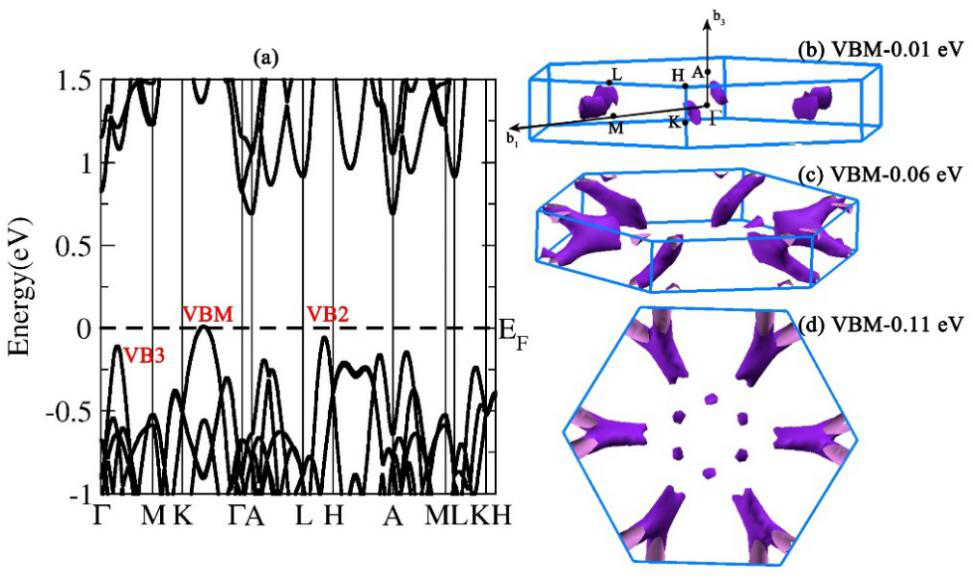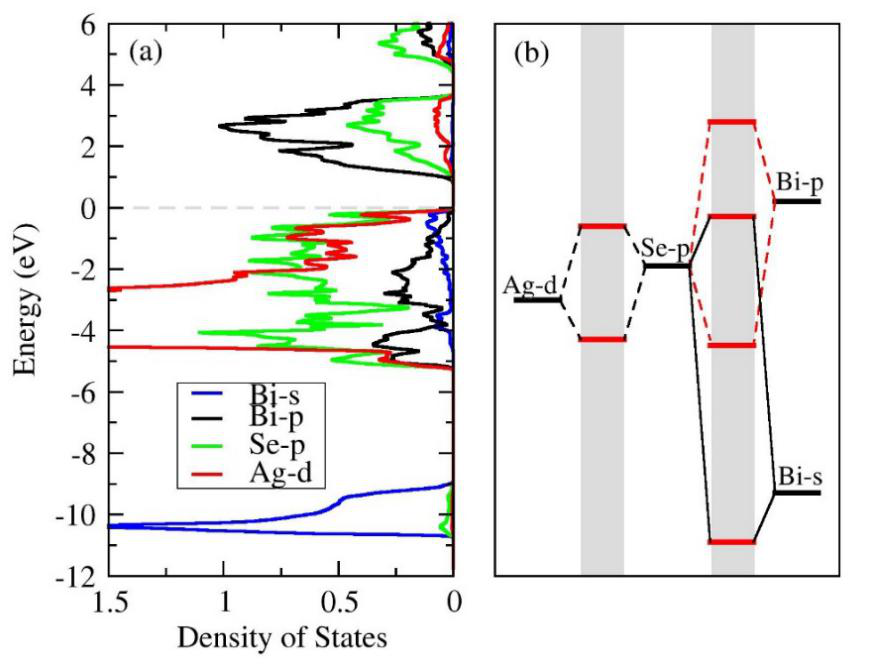
Recently, Chinese researchers developed a new way to improve the room-temperature thermoelectric performance of AgBiSe2 by tuning its band structures using intrinsic and extrinsic point defects. This study, published in Physical Review B, was conducted by ZHANG Yongsheng’s team at Institute of Solid State Physics under Hefei Institutes of Physical Science of Chinese Academy of Sciences (CASHIPS).
Thermoelectric materials enable direct conversion between thermal and electrical energy, and they offer a promising solution for harvesting waste heat to use as electrical power. Compounds with maximum ZT values at relatively high temperature (>900K) are suitable for medium- and high-temperature applications. However, few materials are suitable for low-temperature (~300K) applications.
Recently, the hexagonal phase of AgBiSe2 has attracted increasing attention for its room-temperature applications due to the intrinsic low lattice thermal conductivity (0.45 W/mK at 300 K). Unfortunately, two issues remain. One is that conducting behavior of AgBiSe2 is still ambiguous, which hinders its thermoelectric property tuning using carrier concentrations. The other is that its peak ZT value is too low (less than 0.1) to be commercially used.
For the conducting behavior, researchers calculated defect formation energies of different intrinsic charged point defects at different chemical potentials in AgBiSe2, and found that the Ag vacancy defect was the most stable intrinsic defect in the Ag-rich and Se-rich conditions. Thus, the acceptor defects (Ag vacancy) lead to the p-type conduction behavior of AgBiSe2. The team clarified the conducting behavior of AgBiSe2.
To improve the thermoelectric performance of AgBiSe2 at room temperature, enhancing the power factor of the compound is an essential way.
Based on scrutinizing the band structures of AgBiSe2, two kinds of methodologies have been developed to modify its band structure for achieving high band degeneracy and large power factors, one is shifting the Fermi level into the valence band using intrinsic defects, and the other is converging several valence-band maxima by introducing extrinsic defects.
Eventually, researchers found that the intrinsic Ag vacancy was helpful to significantly increase the power factor, leading to a large ZT for Ag vacancy-doped AgBiSe2: the maximum ZT value increased to 0.3–0.5 at near room temperature.
Besides, they predicted that the thermoelectric properties of AgBiSe2 could be improved by introducing Cu, Rh, and Pd based on the analysis of the bonding characters and atomic energy levels in the compound.
This study provided methodologies to improve the room-temperature thermoelectric applications of AgBiSe2 by tuning its band structures using intrinsic or extrinsic defects.
The calculations were performed at the Center for Computational Science of CASHIPS, the ScGrid of the Supercomputing Center, and the Computer Network Information Center of CAS.

Figure 1: (a) Calculated band structure of the pristine AgBiSe2 along high-symmetry points in BZ. The calculated isoenergy surfaces for AgBiSe2 near the VBM are shown at (b) VBM-0.01 eV, (c) VBM-0.06 eV, and (d) VBM-0.11 eV. (Image by FENG Zhenzhen)

Figure 2: (a) Projected density of states of AgBiSe2. (b) Schematic of interatomic interactions between the main valence states for energy-band formation, where the bonding and antibonding states are formed in the shaded region. (Image by FENG Zhenzhen)

86-10-68597521 (day)
86-10-68597289 (night)

86-10-68511095 (day)
86-10-68512458 (night)

cas_en@cas.cn

52 Sanlihe Rd., Xicheng District,
Beijing, China (100864)

